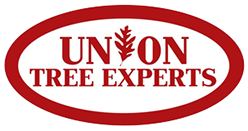Follow Us x
Annual rings: a layer of wood – including spring-wood and summer-wood – grown in a single season; seen in the cross-section of the trunk.
Arboriculture: Science of tree development and care.
Bark: Outer layer of branches, twig and trunks; the protective outer layer.
Branch: A stem that is attached to another larger stem, leader or trunk.
Broadleaf: trees having broad, flat-bladed leaves rather than needles; also, a common name for hardwoods.
Bud: A small protuberance on a stem or branch, sometimes enclosed in protective scales and containing an undeveloped shoot, leaf, or flower.
Buttress root: Large root that flares from the trunk near ground level.
Cambium: layer of tissue one to several cells thick found between the bark and the wood; divides to form new wood and bark.
Canopy: The branches and leaves altogether – the top of the tree. (the crown).
Cavity: Opening or hollow in trunks or limbs of a tree – might be from decay or damage.
Co-dominant stems or trunks: Two equally competing terminal branches or leaders.
Conifer: trees and shrubs that usually bear their seeds in cones and are mostly evergreen; includes pines, firs spruces, yews and Douglas Fir.
Crotch: Top of the union or merging of two branches, or branch and trunk, or two leaders.
Crown: Portion of the tree above ground comprised of all the branches and foliage.
Crown cleaning: Removal of water sprouts, dead growth, dying growth, diseased tissue, broken limbs and structurally bad growth.
Cultivar: Cultivated variety. Maybe a field selection man-made cross or hybrid.
Decay: Deterioration of wood tissue by fungus and bacteria.
Deciduous: Plants or trees that drop leaves, needles or foliage in winter.
Dieback: When ends of twig or branches defoliate, decline and die back to remaining live plant parts. A totally dead tree has no dieback.
Drip line: The perimeter or boundary of the canopy at ground level. However far the branches extend to each side of the trunk.
Drop zone: The general area where branches are dropped to or lowered to with rope, during tree pruning or removal.
Evergreen: trees and shrubs that retain their live, green leaves or needles during the winter and for two or more growing seasons.
Frond: Term used for the leaves of palms and ferns.
Girdling root: A root growing around part of the trunk or all of it that is restricting its expansion or outward growth.
Guying: Securing, repositioning or stabilizing of a tree with ropes, wires or cables attached to anchoring devices.
Hardiness: The potential and inherent ability to withstand temperature extremes, temperature levels – climate and weather condition related.
Hardiness zones: Sections of a country, states or regions designated or assigned a number and/or letter, indicating the high and low temperatures.
Hardscape: The sidewalk, curb, gutter, and street covering the soil surface.
Heartwood: nonliving wood (often dark) found in the middle of a tree’s stem/trunk.
Lateral: A side branch or twig extending from another one.
Lateral root: Roots extending outward off main or buttress roots.
Mature height: The tallest anticipated height a tree is expected to reach.
Multiple leaders: Co-dominant stems competing for the dominant growth extension of tree.
Native: A species that historically occurred or naturalized in a geographic region as opposed to being introduced.
Node: The point on stem where one or more leaves and/or buds are attached.
Permanent branch: A branch that is intended to, and probably should be, left in place for the permanent branch structure of a tree.
Phloem: The food transport tissue of the tree, just outside the cambium and below the bark – basically the trees “downward freeway” for nutrient transport.
Photosynthesis: The food producing process usually occurring in leaves that results in the use of carbon dioxide and the release of oxygen.
Pruning: Removal of living limbs to direct the growth of a tree, or removal of weaknesses or dead growth.
Raising: Removal of lower, lowest, branches for headroom, clearance or improved air circulation in the environment of the tree.
Reduction: A branch removal pruning, with technique, to reduce the overall dimensions of a tree canopy.
Restoration: Pruning to bring a tree’s form, branch structure or health to an improved state.
Root ball: The remaining roots and soil around the base of a tree trunk after it is dug for transplanting, or after harvest in a tree farm.
Root flare: The base of the tree that “flares” outward at the trunk collar between the main trunk and buttress roots.
Root pruning: Cutting roots, for whatever planned profitable reason, to prepare for transplant, to protect concrete like sidewalks, etc.
Sapwood: living wood, often light colored, found between the bark or cambium and the heartwood.
Shrub: A woody perennial plant, usually with multiple stems, smaller than a tree.
Shade intolerant: trees that need a lot of sunlight for growth and survival.
Shade tolerant: trees that can tolerate less sunlight for growth and survival.
Shrub: low-growing woody plant with many stems rather than one trunk.
Softwoods: usually refers to trees that are conifers or cone-bearing; conifers generally have softer wood than angiosperms or hardwoods, but there are many exceptions.
Soil analysis: The results of a chemical test that determines soil pH, and nutrient content including nitrogen, phosphorus and potassium, as well as other minerals.
Stress: A condition of a tree (not good) that means it’s not in a state of premium or reasonable growth.
Subordinate: Pruning a branch or leader to reduce its domination in relation to nearby branches and leaders.
Sucker: A shoot originating from a root or lower trunk – sprouts and water sprouts are shoots from up above.
Taper: A decrease in the diameter of trunk and branches from the base toward the tip.
Terminal bud: The bud at the apex of a stem – main central leader tip, the bud there.
Thinning: Selective pruning or thinning of stems and branches to increase air, moisture, or light penetration to canopy or ground. This can also reduce the load bearing weight of snow and ice in winter.
Transplant: Moving a tree or shrub from one location to another – not usually thought of as from nursery or tree farm to a landscape.
Transplant shock: The tree is showing stress after being transplanted.
Tree wrap: Material wrapped around tree trunks or limbs to protect from sunburn or for protection during transportation.
Trunk: The lowest base stem that supports the tree – the link between the roots below, and the canopy above.
Undercut: An undercut is the first of 3 cuts in the multiple 3 cut system to remove a branch without tearing bark. The undercut, and top cut are both made a little way out from the branch collar and trunk.
Water sprout: A vertical shoot from a branch, or upper trunk, that is usually fairly speedy growing compared to most other branches.
Weak crotch: When 2 or more branches or leaders meet at a union which is weak – in most cases a weak “V” shaped crotch or union.

